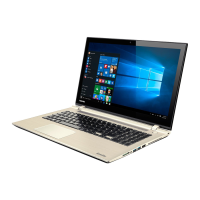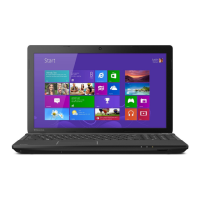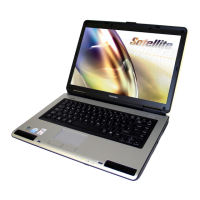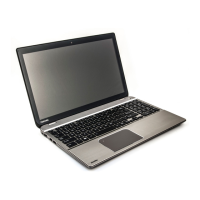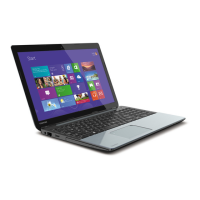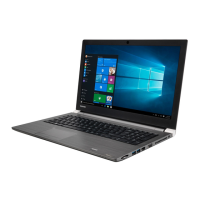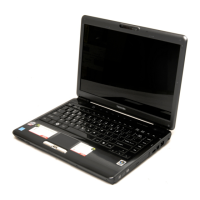
Do you have a question about the Toshiba Satellite 5200 Series and is the answer not in the manual?
Describes the organization and content of the manual, including chapters, appendixes, glossary, and index.
Explains formatting conventions used in the manual for clarity and consistency.
Warns about potential heat-related injuries from prolonged computer contact and hot components.
Advises on the risk of PC card overheating and potential operational instability.
Lists all included hardware and software items to verify upon unpacking the computer.
Highlights the computer's technological features, benefits, and specifications.
Explains the power sources, including battery packs and AC adaptors for system operation.
Describes the available storage options, including fixed hard disks and diskette drives.
Illustrates and identifies external components visible on the computer's front when the display is closed.
Identifies and describes the ports and drives located on the left side of the computer.
Explains the function of various system status lights on the computer.
Details the functions and controls of the included TOSHIBA Remote Control.
Provides guidance on establishing a comfortable and safe work environment for computer use.
Step-by-step instructions for connecting the AC adaptor to power the computer.
Explains the different modes for turning off the computer: Shut Down, Hibernation, and Standby.
Introduces the computer's pointing devices, cPad and TouchPad, for cursor control.
Covers connecting, disconnecting, and configuring the internal modem for communication.
Explains the computer's wireless capabilities, including Wireless LAN and Bluetooth.
Explains the system's thermal management and cooling procedures to prevent overheating.
Details how to use the Fn key in combination with other keys for special functions.
Lists and explains various hotkey combinations for quick access to system features.
Provides essential safety precautions and guidelines for battery handling and longevity.
Instructions on how to replace the computer's battery pack when it reaches its end of life.
Introduces the HW Setup utility for configuring system hardware settings.
Explains how to set, change, or delete user passwords for system security.
Details how to configure the order in which the computer searches for bootable devices.
Describes PC card slots and the process for installing and removing PC cards.
Guides on installing and removing memory modules to increase system RAM.
Instructions for connecting and configuring an external monitor for display output.
Provides general guidelines and a systematic approach to resolving computer problems.
Lists potential hardware and system issues to check for troubleshooting.
Addresses common power-related problems and troubleshooting steps.
Covers troubleshooting steps for battery-related issues.
Provides solutions for common problems encountered with the computer's modem.
Addresses common problems related to Wireless LAN connectivity.
Advises on preliminary steps to take before contacting TOSHIBA support.
Lists the electrical specifications for the AC adaptor and computer power consumption.
Provides an overview of AT commands used for modem control and configuration.
Explains the ATD command for initiating telephone calls with the modem.
Provides instructions for installing or removing the internal modem hardware.
Details the physical, power, and networking specifications of the Wireless LAN card.
Provides a list of common abbreviations used within the manual.
Defines glossary terms starting with the letter 'A'.
Defines glossary terms starting with the letter 'B'.
Defines glossary terms starting with the letter 'C'.
Defines glossary terms starting with the letter 'D'.

